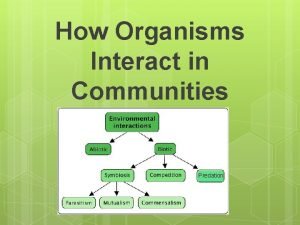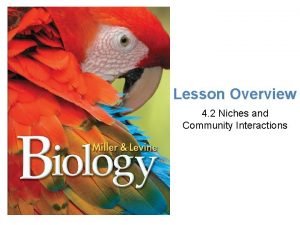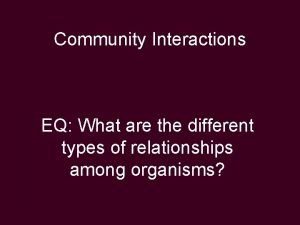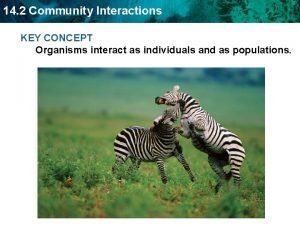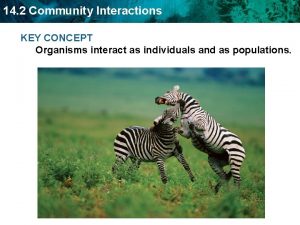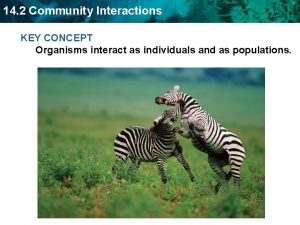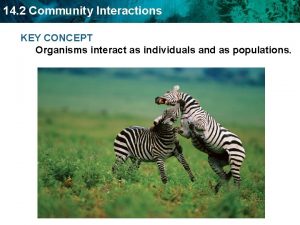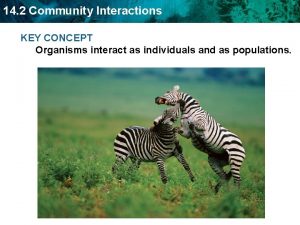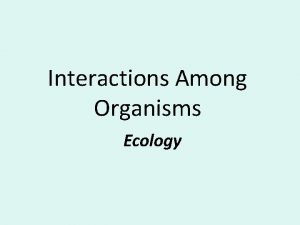14 2 Community Interactions KEY CONCEPT Organisms interact







- Slides: 7

14. 2 Community Interactions KEY CONCEPT Organisms interact as individuals and as populations.

14. 2 Community Interactions Competition and predation are two important ways in which organisms interact. • Competition occurs when two organisms fight for the same limited resource. – Intraspecific competition – Interspecific competition

14. 2 Community Interactions • Predation occurs when one organism captures and eats another.

14. 2 Community Interactions • There are three major types of symbiotic relationships. – Mutualism: both organisms benefit

14. 2 Community Interactions • There are three major types of symbiotic relationships. – Commensalism: one organism benefits, the other is unharmed Ø Human Our eyelashes are home to tiny mites that feast on oil secretions and dead skin. Without harming us, up to 20 mites may be living in one eyelash follicle. Commensalism Ø Organism is not affected + + Organism benefits Demodicids Eyelash mites find all they need to survive in the tiny follicles of eyelashes. Magnified here 225 times, these creatures measure 0. 4 mm in length and can be seen only with a microscope.

14. 2 Community Interactions • There are three major types of symbiotic relationships. – Parasitism: one organism benefits, the other is harmed 0 Parasitism _ + Hornworm caterpillar The host hornworm will eventually die as its organs are consumed by wasp larvae. _ Organism is not affected 0 Braconid wasp Braconid larvae feed on their host and release themselves shortly before reaching the pupae stage of development. Organism benefits

14. 2 Community Interactions • There are three major types of symbiotic relationships. – Parasitism meet their needs as ectoparasites (such as leeches) and endopaasites (such as hookworms)

